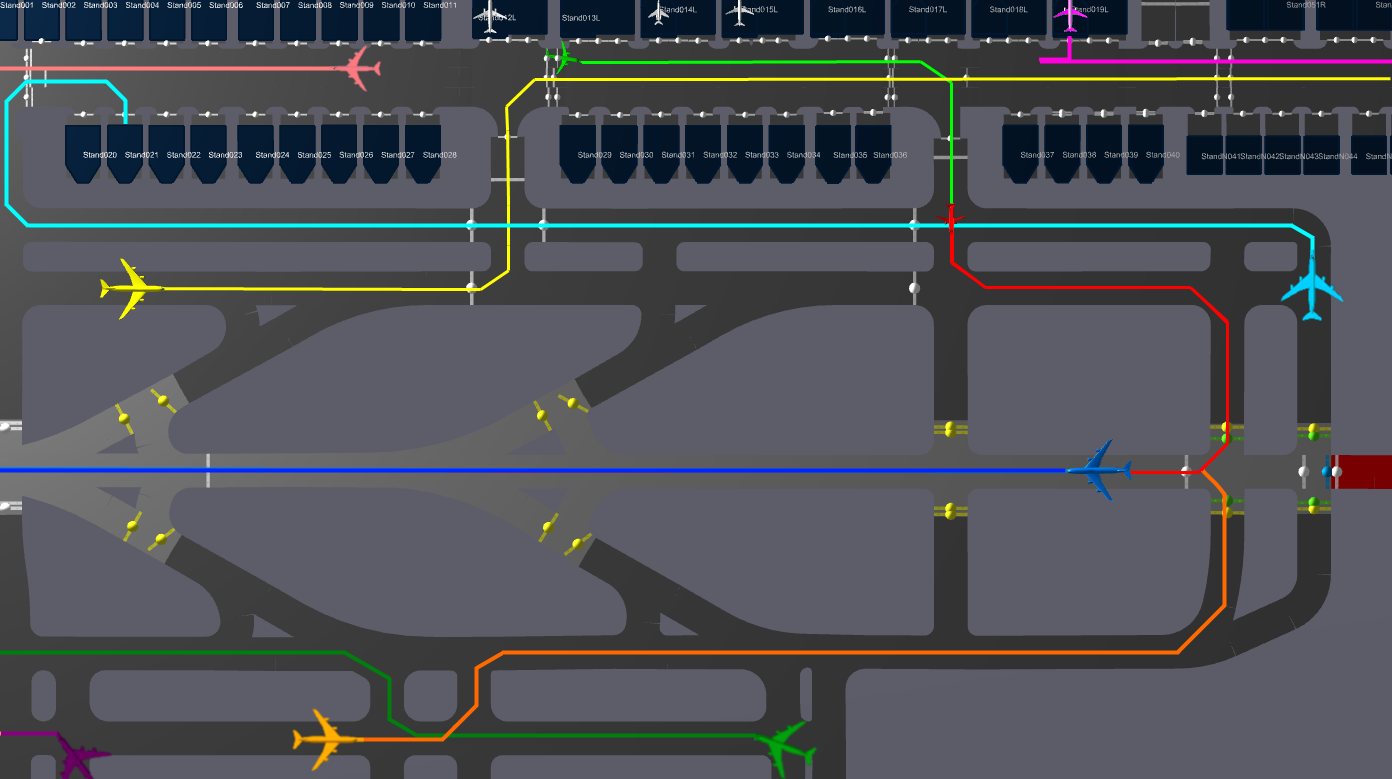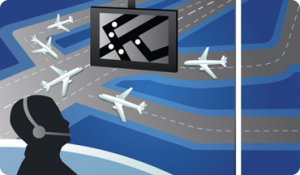
April 22, 2016, by Christofas Stergianos
Is air traffic optimisation really that important?
Over the last 20 years the number of aircraft that are handled by airports has increased dramatically and continues to rise, according to ICAO (International Civil Aviation Organization). Transportation with aircraft is becoming cheaper as low cost airlines become more popular. For the first time ever the total number of UK passengers passing through UK airport terminals exceeded 250 million for a period of 12 months (October 2014 to September 2015 – see Civil Aviation Authority).

No one likes an airport full of air pollution (http://www.phisicalpsience.com/public/Air_Pollution/air_pollution_China.html)
However, most of the airports in the UK cannot easily expand in size as it is expensive and in many cases impossible to use more land around the airport in order to build terminals or runways. Heathrow airport opened as a civil airport in 1946 and since then it has constantly been changing. Now a third runway is being considered but there is a limit on how much bigger it can get. Passenger numbers, however, continue to increase and larger aircraft such as the Airbus A380, which need more space, are becoming increasingly prevalent as well. Furthermore, all these aircraft moving around airports or waiting to take-off produce a lot of carbon dioxide which increases the air pollution around the airports.
So is there a way to solve these problems without spending vast amounts of money to build new terminals and super-high efficiency engines? Is there a way to use the current infrastructure more efficiently and effectively?

Busy airports can have very long queues near the runway (https://www.flickr.com/photos/aalokg/3086725781)
As things are now, from the moment an aircraft begins to travel from a gate until it eventually takes-off an aircraft can spend a long time waiting. An aircraft might have to wait for other aircraft to move around, much like cars do in a congested city. Aircraft are bigger than cars and are much harder to manoeuvre! Having a hundred of them in one airport makes it hard to organise. Furthermore, when aircraft use the runway they have to wait for the turbulence of the previous aircraft to dissipate. If an aircraft is large then the turbulence is bigger. Smaller aircraft are more affected by turbulence so it is best to group aircraft according to their size. Moreover, aircraft travelling to the same direction after they take-off need to have some distance between them. So it would be better to have one aircraft going, say, north and the next going south.

A controller has many complicated decisions to make (https://www.faa.gov/nextgen/snapshots/stories/?slide=20)
Well, this starts to get a bit complicated for the people in the control tower, who have a number of decisions to make, such as – who takes-off first? Who has priority? When to pushback? When to start heading for the runway?, What happens when 20 aircraft are moving around the airport? Who gets priority when they meet at a crossroad? Should the arriving aircraft taxi first or the departing? One aircraft is late… do we wait? Who goes next? This aircraft was going south. Now two aircraft are taking-off and both are going north. Where do we fit the aircraft that was late? This is a situation that you don’t want to be thinking while you are heading to your vacation in Marbella and waiting to enjoy your piña colada.
Ok, we have established that handling a big airport is not easy. Well, that is why we have computers. Just put all the information to the computer wait for the solution and problem solved. This would be great but the problem is tricky even for a computer. Nonsense, nothing is even slightly hard for a fast computer, you may say.
Let’s say you have 5 aircraft and you want to find the best take-off sequence. You can have aircraft 1 taking-off first, then 2, 3, 4 and 5. Or you can have aircraft 1 taking-off first and then 3, 2, 4, 5 and so on. There are 120 combinations that you will need to consider, which is the factorial of the number of the aircraft you are considering (5! = 5*4*3*2*1 = 120). Do that for 10 aircraft and you have more than 3 million combinations. For 20 aircraft you have 2.4*1018 combinations!

Brute force search for the optimal solution takes forever! (https://triunfob.wordpress.com/page/67/)
Lets assume that a computer can find the result of one combination with just 10 simple operations. The fastest computer today (Tianhe-2) can do 3.386*1016 operations per second. Pretty impressive right? Well, processing all the combinations that can arise from just 26 aircraft (approximately 4*1026 combinations) will take more than 3 millennia!
Now think that over just one day a PC will need to route 1200 flights. Each flight has numerous available paths to reach its destination and each aircraft can park at one of the 230 stands that are available (depending on their size). Furthermore, at every given time you can have more than 10 aircraft that need to take-off. You have arriving aircraft, departing aircraft, aircraft that go for maintenance, de-icing, changing gates etc. This problem is impossible to solve with brute force. So that is why optimisation is so important.
Utilising optimisation methods can reduce the duration that is needed to find a solution while providing an optimal or near optimal solution. This means that it can find a very good (or even the best) solution to a problem within seconds. A good solution can increase the capacity of an airport and reduce the time that an aircraft has its engines on. Reducing the average taxi time for an aircraft by 2 minutes can save up to £15 million worth of fuel per year in an airport like Heathrow.
Even though it is a complicated optimisation problem, a lot of research is currently happening in this area. An optimisation model that was developed by The University of Nottingham has recently been applied to Heathrow airport’s take-off processes and proved to be very effective. Hopefully more research will lead to having a more precise and integrated model with accurate movements of aircraft that will allow ground movement models to be used for more reliable integrated decision making systems in airports.
More information about Air Traffic Optimisation can be found at.: Air Transportation Research webpage of ASAP research group.
The Institute for Aerospace Technology is currently welcoming applications for a range of PhD Fellowships. These Fellowships are funded by the Institute’s Marie Skłodowska-Curie Actions Initial Training Network, ‘INNOVATIVE’. For more information and to apply, please visit the University’s careers page.

For anyone that wants to know how we ended up to 3 millennia the calculations are the following:
The combinations of 26 aircraft is the factorial of the number of aircraft (26!).
26! = 4.03*10²⁶
then divide this by combinations that can be calculated per second (3.39*10¹⁶/10) (remember! You need 10 operations per combination)
then divide by 3600 to get hours
then divide by 24 to get days
then divide by 365 to get years
4.03*10²⁶/(3.39*10¹⁶/10)/3600/24/365 = 3776.8
result = 3776 years!